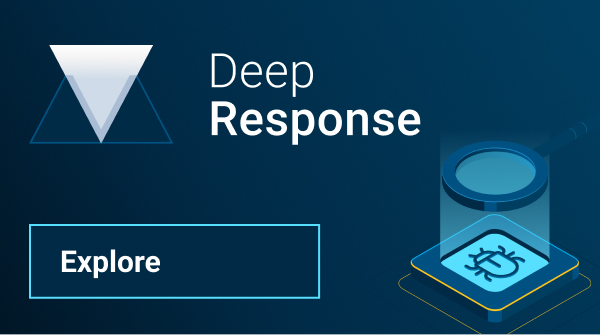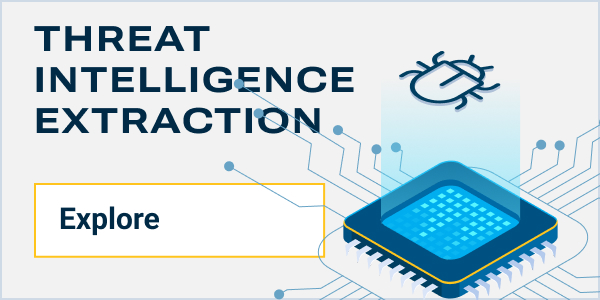In today’s cybersecurity landscape, malware sandboxes are essential. They provide a controlled environment where suspicious files or URLs can be detonated. This allows security teams to safely understand malicious behavior without harming their systems. With the rise of evasive and zero-day attacks, sandboxes have become crucial for proactive defense. VMRay DeepResponse offers a powerful solution specifically designed for incident response, threat hunting, and detection engineering – all powered by advanced malware sandbox technology.
Section 1: What is a Malware Sandbox?
A malware sandbox is a virtual environment that mimics a real operating system. Within this sandbox, suspicious files and URLs are executed, and their behavior is closely monitored. The sandbox can capture detailed data like network traffic, system calls, and file changes. This analysis reveals the malware’s intentions, indicators of compromise (IOCs), and potential impact on a live system.
Section 2: Why is a Malware Sandbox Important?
A malware sandbox is an essential tool for several reasons. First, cybersecurity professionals can analyze malware in a safe and controlled environment. This is critical because malware can be highly destructive and cause significant system damage. By using a sandbox, analysts can study the behavior of malware without risking damage to their systems. Second, a malware sandbox can help identify new and emerging threats. Malware is constantly evolving, and new strains are continually being developed. Cybersecurity professionals can identify new threats by analyzing malware in a sandbox and developing effective defenses against them. Finally, a malware sandbox can be used to test the effectiveness of existing security measures. By running malware in a sandbox, analysts can determine whether their current security measures effectively detect and block malware.
Section 3: Does Your Business Need a Malware Sandbox?
You will have heard it or perhaps said it yourself: Your organization has already invested in a multilayered security environment, and now there is a request for yet another technology. Another point solution for malware protection? Is the additional investment justified? What does a sandbox provide that an organization does not already get from their Next-Generation Firewall, Intrusion Prevention and Intrusion Detection Systems (IPS, IDS), Email Gateway, Web Gateway, or Antivirus?
They also protect from malware. Nearly every organization already has technologies in their security stack that can detect malware, but in most cases, it is detection based on static analysis methods using malware signatures or static heuristics. Very effective against known malware and partially against variants of known malware, but not against threats that have not been seen before, such as zero-day malware and targeted malware. The problem lies in detecting the “unknown.”
Section 4: Must-have Capabilities of a Best-of-Breed Sandbox Solution
Evasion Resistance:
Advanced Threats are designed to recognize when they are running in a sandbox and will take evasive measures to avoid detection. Many sandboxes use in-guest monitoring, leaving tell-tale signs within the analysis environment. Look for a sandboxing technology that places the monitoring system outside the analysis environment and looks “from the outside in,” so the virtual machines used for analysis can run completely unmodified. Sandboxes must replicate in every detail the actual desktop and server systems they are protecting and allow Golden Images, pseudo-random attributes, different location settings, automated user interactions, and automated reboots as part of the analysis environment. Sandboxes must support all major file formats, scripts, archives, drivers, executables, and URLs. To counteract environment-aware malware, the sandbox must be able to detect the malware’s environment queries and identify hidden code branches.
Implementation, Maintenance, Scalability:
Carefully assess “hidden” success criteria like implementation cost, implementation time, resources required for maintenance and management of the sandbox, deployment options, and scalability. They all contribute to the overall success of the sandbox project. Choose a malware sandbox that offers deployment flexibility (on-prem, Cloud, a mix of both) and can be easily scaled up. The solution must meet your organization’s security requirements today and into the future. You might want to switch from a centralized sandbox today to regionally deployed sandboxes in the future at an affordable cost. Due to scalability limitations, the total cost of ownership (TCO) may become an issue with appliance-based sandboxes. A malware sandbox must offer a tightly integrated multi-stage analysis engine, combining static and dynamic methods.
Known good and known bad files will be quickly discovered and removed from the process by different static methods, and only the remaining unknown files will undergo dynamic analysis in the sandbox environment.
Security Stack Integration:
No security solution can live in a silo. Defending against advanced malware requires significant coordination between the different technologies in the security stack. The solutions must work together, share information, and correlate events to achieve their full potential. The malware sandbox is no exception. The sandbox should have a wide range of out-of-the-box connectors to make integration with the organization’s existing security stack easy and offer APIs for custom integrations. Typical technologies to be integrated are EDR, SIEM, SOAR systems, and Threat Intelligence Platforms (TIP).
Section 5: Multi-Platform Malware Analysis with VMRay DeepResponse
Modern threats aren’t limited to a single operating system. Malware is increasingly designed to target multiple platforms, including Windows, macOS, and Linux. A best-of-breed malware sandbox offers cross-platform analysis capabilities to combat these threats.
- Diverse Analysis Environments: DeepResponse supports virtual machines tailored to various versions of Windows, macOS, and Linux, ensuring accurate behavioral analysis across different operating systems.
- Specialized Threat Detection: The sandbox can identify threats specifically targeting macOS or Linux systems, which traditional security tools focused on Windows often overlook.
- Centralized Insights: Analysis results across platforms are consolidated within a single pane of glass, providing a unified view of threats for efficient response.
Section 6: VMRay DeepResponse: Advanced Malware Sandboxing
VMRay DeepResponse is built to address these must-haves. Its evasion-resistant technology, depth of analysis, and flexible deployment options make it ideal for modern security operations. DeepResponse significantly enhances incident response, threat hunting, and detection engineering workflows.
Section 7: Automation & Machine Learning in Malware Sandboxing
Automation and machine learning are revolutionizing malware sandboxing. By automating analysis, analysts save time and can focus on higher-level tasks. Machine learning algorithms can identify subtle patterns in malware behavior, aiding in faster detection and the development of new defenses. VMRay DeepResponse actively incorporates these technologies to stay ahead of evolving threats.
Section 8: Malware Sandboxes in Incident Response
A malware sandbox is an essential tool for incident response teams. In the event of a breach, time is of the essence, and every second counts. The ability to quickly analyze malware can be the difference between containing an attack before it spreads and suffering significant damage.
A malware sandbox can help organizations quickly identify and respond to threats as part of a larger incident response plan. Security teams can use the sandbox to analyze any suspicious files or activity detected on their systems when an incident occurs.
Analysts can quickly determine whether malware threatens their organization and take appropriate action by analyzing malware in a sandbox. This may include quarantining infected systems, blocking malicious traffic, or deploying new security measures to prevent further attacks.
In addition, using a malware sandbox as part of an incident response plan enables organizations to learn from past incidents and improve their defenses against future attacks. By analyzing malware’s behavior in real-world scenarios, cybersecurity professionals can identify weaknesses in their current security measures and develop more effective protection.
Incorporating a malware sandbox into an incident response plan is essential for any organization that takes cybersecurity seriously. By leveraging this powerful tool alongside other security technologies and best practices, organizations can better protect themselves against today’s ever-evolving threats.
Section 9: Generation of In-House Threat Intelligence
Many security teams need help to enrich their third-party threat intelligence data with their own threat intelligence that is based on the unique attacks they are already seeing inside their networks. With the right sandbox solution, the teams can automatically extract highly reliable indicators of compromise (IOCs) from data gathered during threat analysis and, through proper integration with the wider ecosystem, have it automatically pushed to security tools that trigger the necessary measures. The quality of the in-house generated IOCs is of paramount importance. Only invest in a solution that generates good quality due to high noise levels, which miss out on necessary details during analysis and result in high false positive rates.
Section 10: What is the best deployment option for a malware sandbox?
Malware sandboxes play a key role in advanced threat detection and incident response. To derive maximum value from your investment in sandboxing technology, ensure you allow enough time to evaluate the different deployment options available to you and carefully consider their resource implications, such as implementation time, implementation cost, and staff resources needed to manage and maintain the sandboxing solution. There are four main deployment models: managed in-house by your security staff as an on-premise solution, managed in-house by your security staff as a cloud-based solution, outsourced to a Managed Security Service Provider (MSSP), and lastly, a hybrid approach combining different elements of the above. Each scenario has pros and cons, so be sure you fully understand how they will work in your environment.
Deployment Option 1: On-Premise
Pros: On-premise sandboxes investigate potential threats without data leaving the organization’s network. Therefore, it is the preferred option of organizations that are required to keep sensitive data within their environment for compliance reasons. On-premise sandboxing solutions usually allow a higher degree of customization, such as using your organization’s Golden Images or modifying advanced settings.
Cons: Hardware cost (sandbox appliance or server hardware), time and cost of initial implementation, and ongoing maintenance. TCO can become problematic in appliance-based sandboxes due to potential scalability issues. Keep in mind: A very important decision criterion for or against an in-house solution is the organization’s ability to recruit, train, and retain the highly specialized security experts needed to deal with threat analysis and incident response. Depending on the organization’s security needs, the team would have to be large enough to provide 24x7x365 coverage. It goes beyond cost considerations – the cybersecurity skills gap is the true challenge.
Deployment Option 2: Cloud-Based
Pros: Cloud-based deployment offers faster time-to-value (no hardware to purchase, no implementation nor maintenance efforts required). It is easier to scale up and provides more flexibility in terms of regional coverage—at some point, you might want to move from a centralized sandbox to geographically dispersed sandboxes that are managed by regional teams.
Cons: As data will be processed outside the organization’s network environment, cloud-based solutions might not be an option for some highly security-sensitive organizations. As with on-premise deployments, in-house security specialists are needed to operate the sandbox. Keep in mind: Regulated sectors such as health care, finance, and government are required by compliance regulations to have control over where their data resides. Before committing to any cloud-based solution, ask your shortlisted vendors what data center locations they can offer, if their cloud-offering allows the creation of completely isolated environments for each customer, if there are any open-source tools and services involved, and if their solutions conform with data protection regulations, such as GDPR.
Deployment Option 3: Managed Service
Pros: For smaller organizations, using a security-specialized service provider is often the easiest way to strengthen their cyber resilience quickly. Gone are the days when IT personnel could take care of cybersecurity alongside running the systems. With managed services, they can leverage the expertise already available.
Cons: Managed Security Service Providers (MSSP) have access to sensitive business information, which must be considered when outsourcing security operations. When using an external provider, you should audit them regularly, including facility visits. Look beyond the impressive screens on the wall, and ensure that your compliance and data privacy requirements are met and that you receive the level of security service needed to keep your organization safe. Keep in mind: You cannot outsource responsibility.
Deployment Option 4: Hybrid Model
Pros: Hybrid deployment scenarios offer the highest level of flexibility. You can combine an on-premise sandbox to retain critical data in-house, a cloud sandbox with a self-managed cloud sandbox for better scale, or use any of the two in-house options with managed services to provide 24x7x365coverage for defined use cases. Some organizations kick-start their project with managed services to obtain the much-needed malware-detection and incident response capabilities quickly, then move to a hybrid model and build up their expertise along the way, and, after a couple of years, move to entire in-house operations.
Cons: You need to spend some time designing a well-structured hybrid model. The mix of different deployment options adds complexity to the system.
Section 11: VMRay DeepResponse: Your Solution For…
- Incident Response: DeepResponse speeds up analysis, reduces skill barriers for SOCs/CERTs, and provides the insights needed for swift action.
- Threat Hunting: Get deeper visibility into threats and extract IOCs and IOBs to improve proactive hunting.
- Detection Engineering: Automate IOC extraction and analysis, saving time and maximizing the return on security investments.
Conclusion
Malware sandboxes are a powerful addition to any security arsenal, offering proactive analysis and threat response capabilities. VMRay DeepResponse sets the standard, delivering automation, detailed analysis, and the flexibility organizations need to protect against today’s sophisticated attacks.
Discover how VMRay DeepResponse can transform your security operations!
Table of Contents

“The most important capability in our investigative toolkit is VMRay.
Whether it’s investigating a suspicious link that redirects to a credential harvester or a suspicious Microsoft Word document that may contain malicious macros – VMRay allows us to detonate these samples safely and generate a detailed report of the resulting activity.
Armed with this information, we provide detailed, thorough recommendations to our customers.”
Ray Pugh – Director, Security Operations








